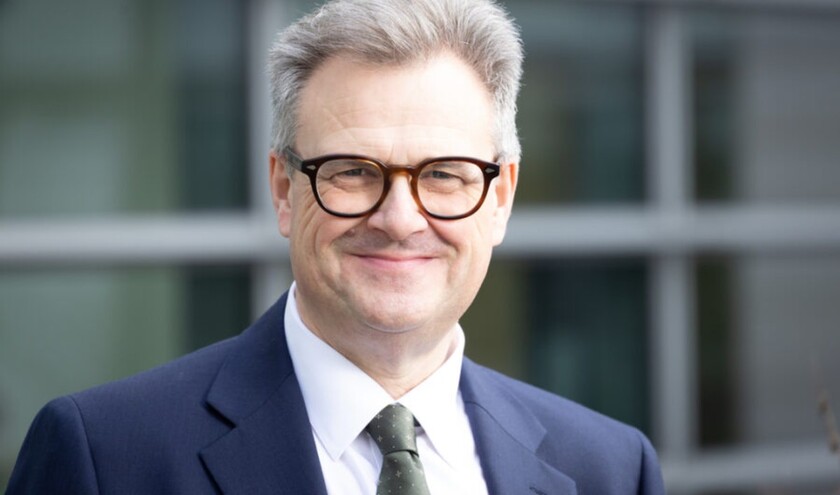The HomeFirst programme was launched in spring 2023 after Leeds Health and Care Partnership recognised a new approach was needed to deliver better joined-up care and support for people who receive intermediate care services across the city.
‘We, like every other part of the system, had a very challenging winter in terms of managing seeing our patients in the right place of the system,' Prof Wood said.
‘There was a reflection of the fact that between ourselves, other parts of the NHS and social care, we all had in those days going back seven or eight years a slightly different version of why that was the situation we found ourselves in.'
The trust commissioned an external piece of work to provide a city-wide diagnostic on how people came to its front door in an unplanned way and were admitted to hospital and then needed discharge.
‘Many people at the time thought Leeds was a little bit short on care home beds,' Prof Wood observed.
‘But what the piece of work told us was that our bottleneck was much more about community beds and how we could support people who didn't need to be in an acute hospital bed, but maybe needed a bit more time before they could either go home or onward to a place of care.
‘So out of that came a whole pathway improvement model. We had some funding from what was called the NHS discharge front runner programme but we actually quite quickly wanted to talk much more about intermediate care and that's why we called it HomeFirst because we wanted to look at it across the whole system and not just from a hospital lens.'
HomeFirst is a truly collaborative undertaking delivered by Leeds City Council, Leeds Community Healthcare NHS Trust, primary care and the GP Confederation, Leeds Teaching Hospitals NHS Trust, Leeds and York Partnership Foundation Trust, and charity and voluntary sector organisations.
‘One of the real strengths of Leeds is that we have a really strong collaborative ethos between organisations,' Prof Wood said.
‘It's actually very much a collaborative group of equals in this space.
‘Agreeing to work together on the whole pathway between ourselves, community and social care was really the genesis of the programme.'
Having continued to use external support in order to carry out its diagnostic phase, the partnership mapped out the whole care pathway with an improvement approach Leeds Teaching Hospitals NHS Trust and its partners had adopted.
‘We had a map of the whole pathway and that allowed us to look at where the big opportunities were for improvement which then gave us the areas of work to concentrate on,' Prof Wood said.
The joint vision was to deliver a person-centred, home-first model of intermediate care across Leeds that was joined up and promoted independence by ensuring more people can stay at home for longer to receive their care or return to their home sooner rather than staying in hospital.
Five core projects were established in order to achieve this ambition comprising: redesigning home-based intermediate care; transforming preventative services to avoid escalations in need with a specific focus on avoidable acute admissions; transforming bed-based intermediate care to improve outcomes and minimise length of stay in short-term beds; making use of the wealth of data in the system to produce system and service level dashboards, while establishing the right cross-partner governance to make effective decisions using these; and redesigning the discharge model to minimise delays and ensure the most independent outcomes.
The ambitious scope of the programme has meant integrating multiagency, multidisciplinary teams, comprising social care practitioners, nurses, therapists, doctors, managers, administrators, medicines management, third-sector partners, care delivery staff and care support staff.
Integration and joined-up care between partners has been supported by technology.
‘We were able to develop an active single care record for recovery,' Prof Wood noted.
‘Health and social care teams were able to see the same dashboard and that dashboard operates at a city level as well as a single patient level.
‘An individual community care location could see how long their length of stay was compared to other locations in the city and we could focus and flex the programme to work with those teams to improve.'
Use of the dashboard and data sharing played a key role in avoiding duplication.
‘We were able to see people were getting two visits on the same day, one from a health team and one from a social care team, because they couldn't see what either team had done or what they had done to support the person in their own home,' Prof Wood observed.
‘There was a lot of duplication going on, which we've been able to reduce.'
Metrics have been employed to measure the impact of the programme, including, as of May 2025, 77 more people able to go home after intermediate care, 496 additional people benefiting from reablement each year, an 8.1 reduction in average stay in short-term beds, 664 more people going home each year after their stay in hospital, a 30% drop in length of stay for no reason to reside patients and 647 fewer adults admitted to hospital each year.
As a result of its successes, plaudits have been heaped on the programme with it being recognised as an NHS England Front Runner area contributing to the development of the national guidance on intermediate care launched in autumn 2023. HomeFirst has also been identified as an example of good practice in the recently published Neighbourhood Health Guidelines.
Looking ahead, HomeFirst Phase 2 will see the partnership build on its work in intermediate care services as well as shift to a neighbourhood proactive care service.
‘We're very keen to be one of the pilot sites for the new neighbourhood health service,' Prof Wood noted.
‘That will be led by our colleagues in the local authority, but as an NHS partner, we're all absolutely committed to that.'
With its pioneering approach to integration and neighbourhood health, Leeds Health and Care Partnership embodies the best of the NHS the Government wants to see rolled out to the rest of the NHS in its 10-Year Health Plan.



